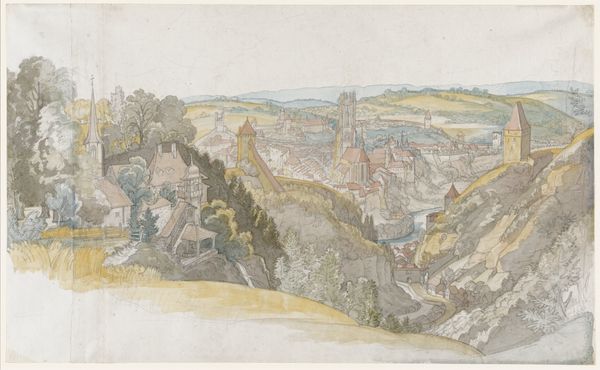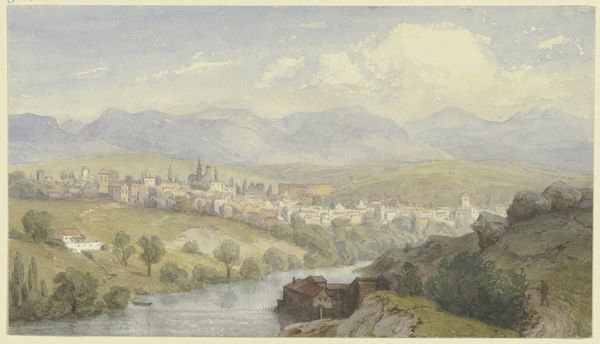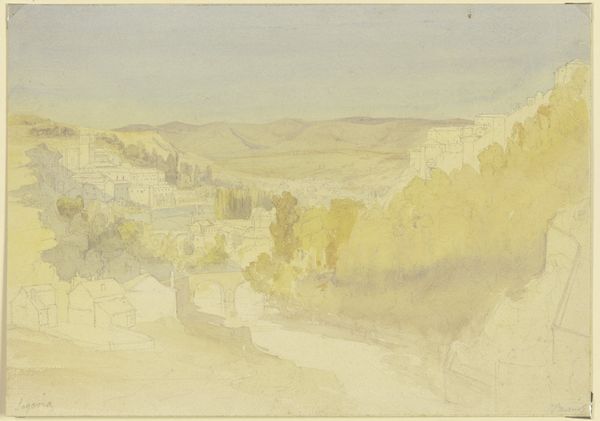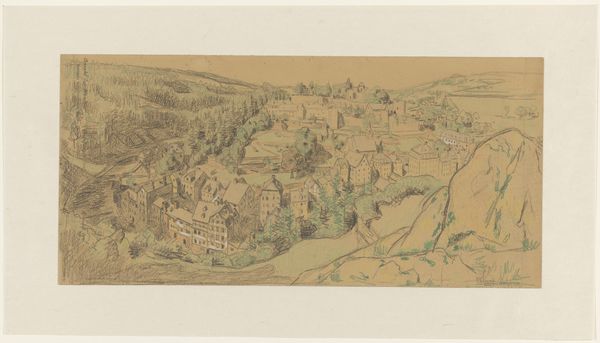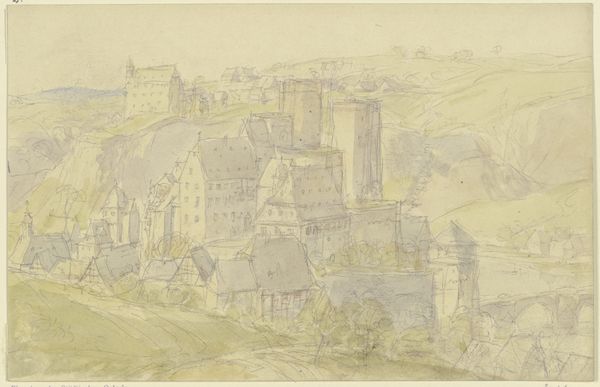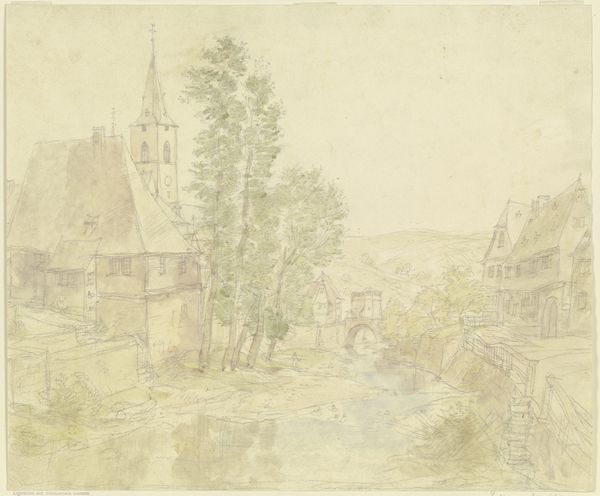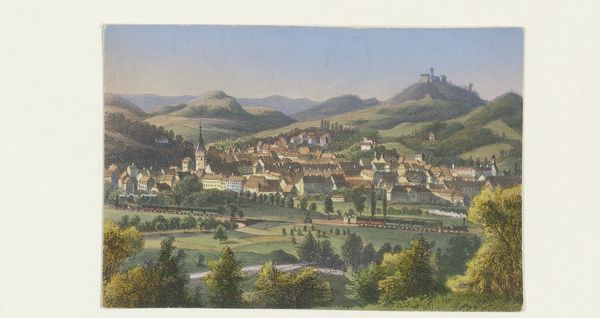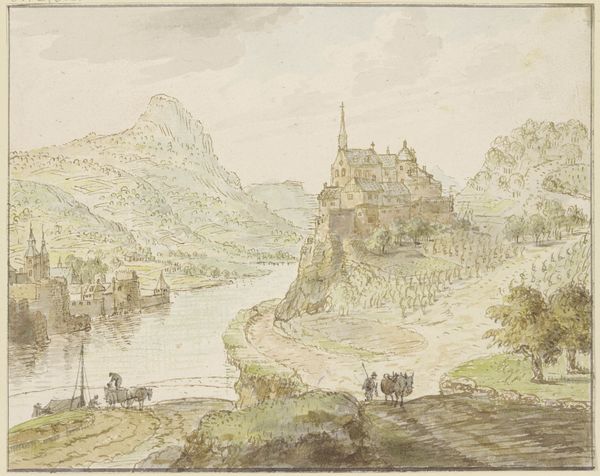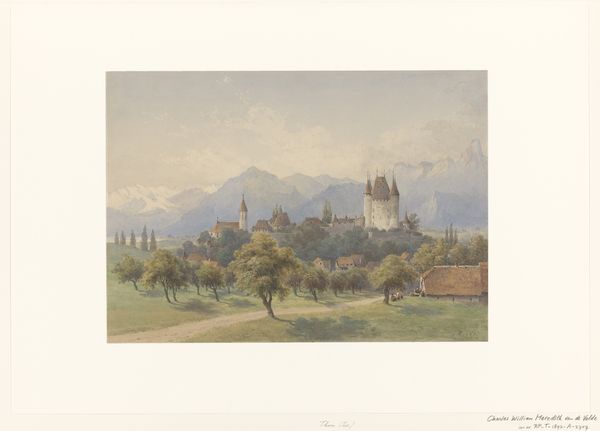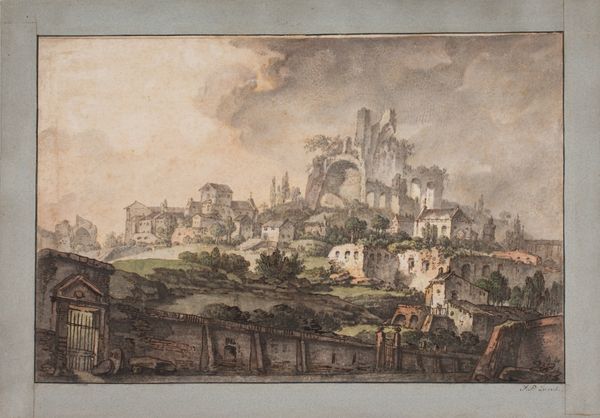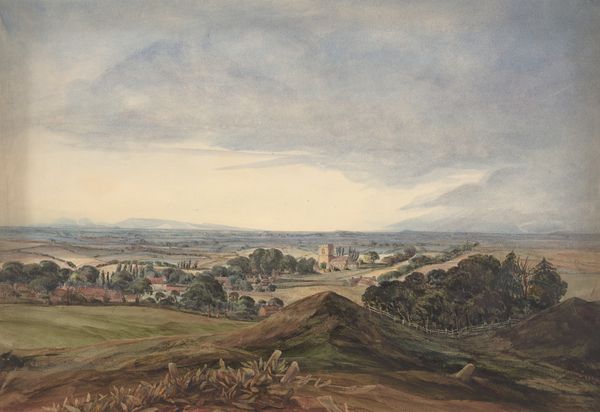
Kleeberg in der Wetterau, Bergstädtchen mit alten Türmen, Schloß und Kirche 1870
0:00
0:00
Copyright: Public Domain
Peter Becker made this watercolor painting of Kleeberg in der Wetterau, Germany, in the mid-19th century. What exactly was Becker trying to express in this seemingly straightforward topographical view? The scene depicts a town dominated by its castle, church, and old towers; it's a picture of established power. But consider the figures in the foreground: laborers, perhaps repairing the very road we see. The painting's social commentary resides in its depiction of the relationship between the town's traditional structures of authority and the laboring class. Looking at the painting in this light, it could be an example of Biedermeier art, which reflected a growing middle-class consciousness. To better understand this artwork, it is important to study the historical context of Germany in the 19th century and the art institutions that Becker would have been familiar with. Through such research, we can see the social structures in art.
Comments
No comments
Be the first to comment and join the conversation on the ultimate creative platform.
